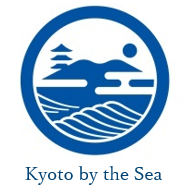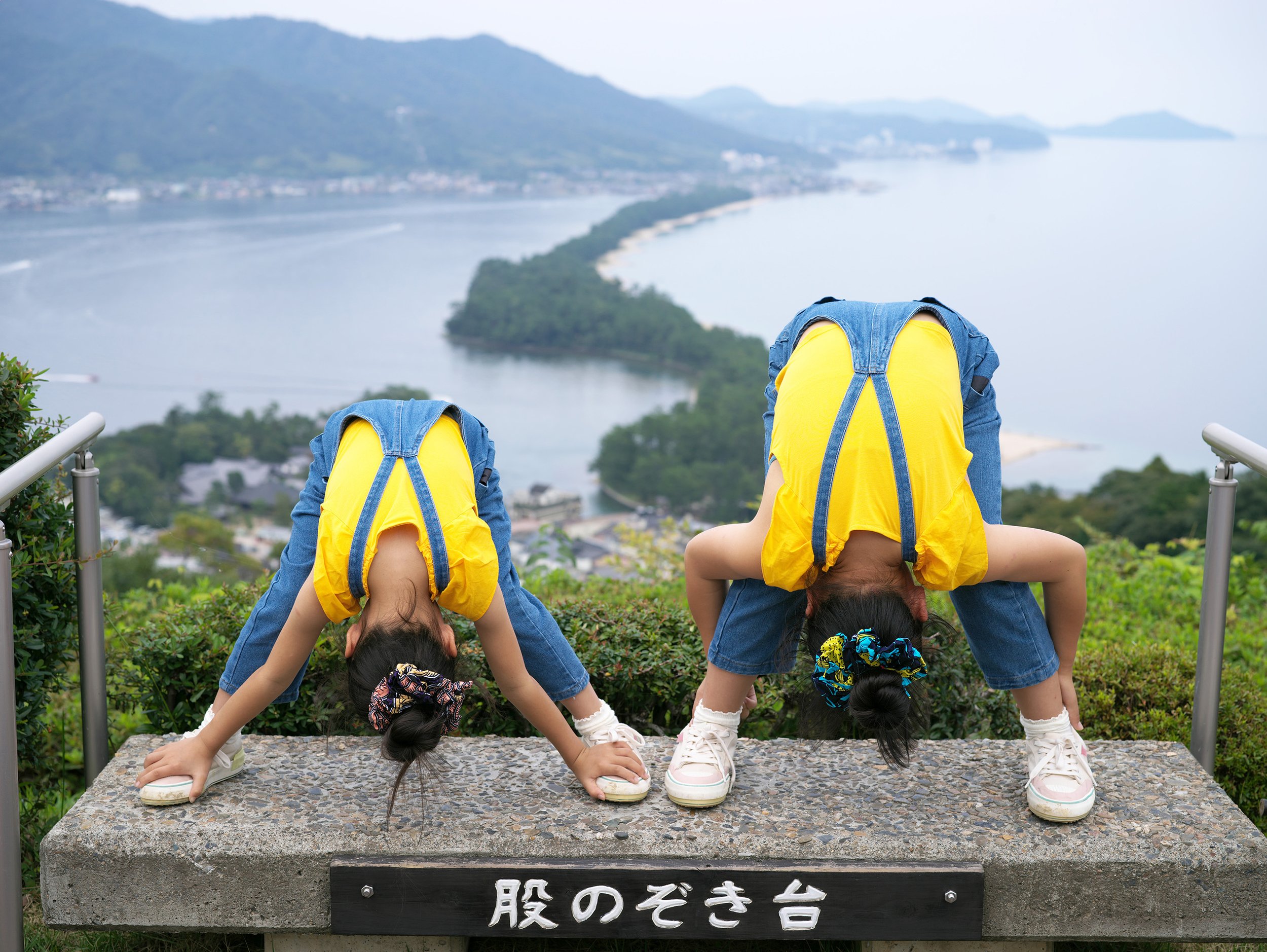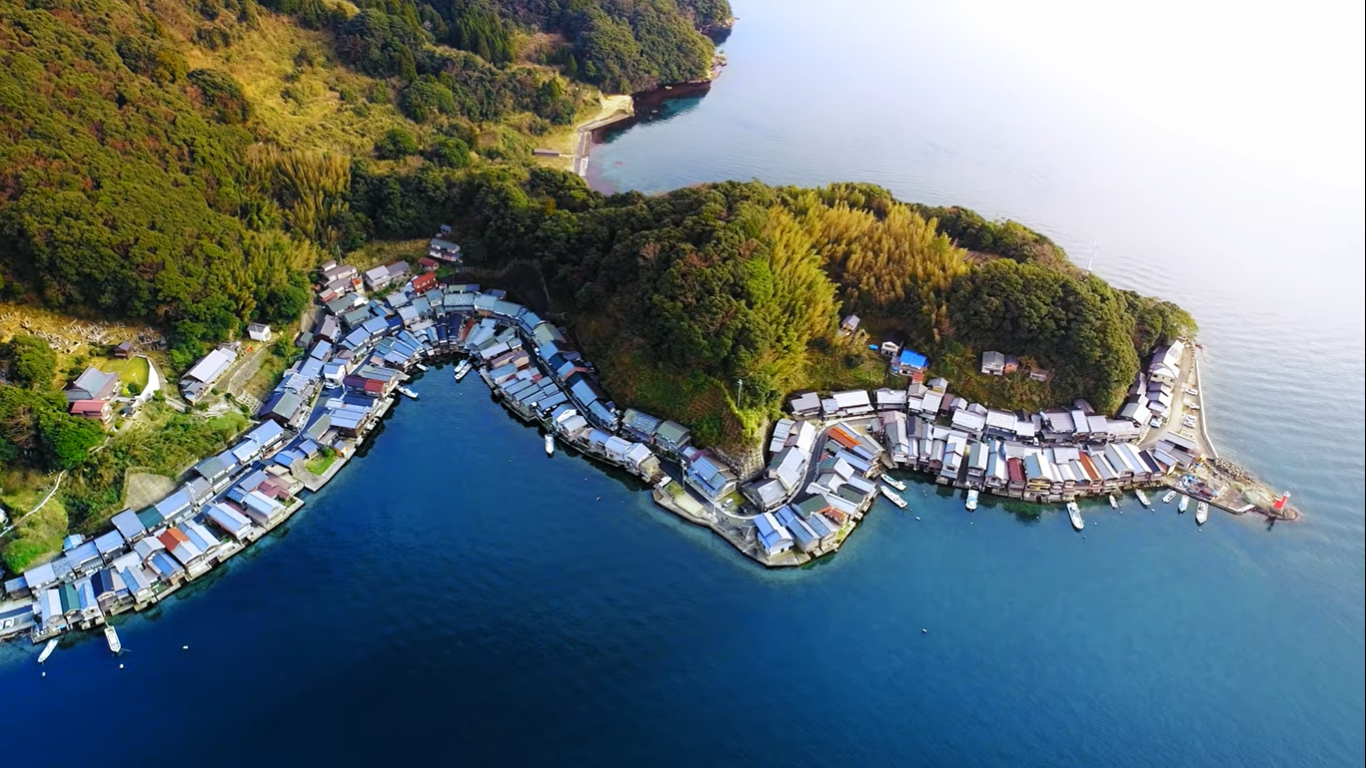Origin of Japan amanohashidate
What are they doing? Watching a dragon up above Amanohashidate
2 night 3 days.
For anyone visiting Kyoto City, this area is a must visit. It complements Kyoto City and gives the visitor a chance to see the city’s deep roots.
A two-hour limited express train from Kyoto City brings visitors to the Origin of Japan. This region was Japan’s first ancient kingdom, and that DNA creates the foundation for everything people do here. The artisans are innovators influencing global fashion and design, the sake brewers are exhibitionists creating sake from ancient red rice, wisteria vines, and legendary strains of bacteria found in their centuries’ old breweries. This region traces its roots to the first rice plants cultivated in Japan and the first sacred sake offered to the gods. This region is a utopia for foodies and creatives.
AMANOHASHIDATE
Arrive at Amanohashidate Station and meet your guide or guide yourself and head to your hotel to drop off your bags. The accommodations here are modern, clean, and have natural hot springs to accompany the excellent cuisine. There are quite a variety of accommodations ranging from onsen hotels, to modern ryokan with western suites, and even accommodations with gorgeous Japanese architecture set along the sea. The following two links include some of Amanohashidate’s top accommodations. Look for the “Amanohashdiate” next to the accommodation’s name to check if its in this area.
Either with a guide or on your own, you have plenty of time to explore one of Japan’s natural wonders, Amanohashidate. The bridge to heaven, and one of Japan’s Three Scenic Views, this area just feels ancient. Incredibly easy to travel around without a car, there are options to walk, bike, or even boat around the area to soak in this 1300-year-old pilgrimage route that nature finally finished creating over 3,000 years ago. here are some highlights regarding the Amanohashidate area. Pick up a 1 Day pass or 2 Day pass to get the most out of exploring Amanohashidate. The day pass includes a rental cycle, boat ride across the bay, and access to the chair lift or cable car that runs up to the overlook on the far side of Amanohashidate.
Points of interest include
•sea kayaking, SUP, swimming, rent-a-cycles, boat tours, and two overlooks
•Chionji, temple of wisdomWalk back to Amanohashidate Station to catch the bus to Ine, or call in advance for a high-speed boat to travel on the water.
•Motoise Kono Shrine, one of the most important shrines in Japan that predates the Ise Grand Shrine. It is also the location where sacred sake was first given to the gods as offering.
Day 2
Ine, one of the world’s rarest villages
230 boat houses line Ine Bay (one of UNESCO’s World’s Most Beautiful Bays), and visitors are invited to explore the singular street that wraps around the bay, walking between people’s main house (mountain side) and boat house. Boat houses were traditionally used as boat garages and storage, and a few of them have been generously opened to the public for viewing. The English speaking staff at the Ine Tourist Association (where the bus drops visitors off in Ine) offers inexpensive viewing tickets and will explain which houses are open. Other highlights in Ine include:
Ine mondori walking tour (sustainable fishing and Ine lifestyle tour)
includes: English speaking guide, sea taxi tour (30 minute small boat tour of the bay and history), visit to funaya boat house
There are a few lunch options in Ine as well. For a list of some of the best places to grab some seaside eats, check out the Ine restaurant page
Heading back to Amanohashidate via the bus that picks visitors up in front of the Tourist Association, its a good idea to sit on the left side of the bus coming back for sea views (and the right side of the bus going to Ine).
There are quite a variety of accommodations ranging from onsen hotels, to modern ryokan with western suites, and even accommodations with gorgeous Japanese architecture set along the sea. The following two links include some of Amanohashidate’s top accommodations. Look for the “Amanohashdiate” next to the accommodation’s name to check if its in this area.
Day 3
For visitors who want to make a full-day of the region before heading back to Kyoto City, or on to their next destination like Kinosaki Onsen or Osaka, there are a variety of experiences created specifically for the English speaking market. And they can all be done with public transportation.
Check out some of our other inspiration courses!










